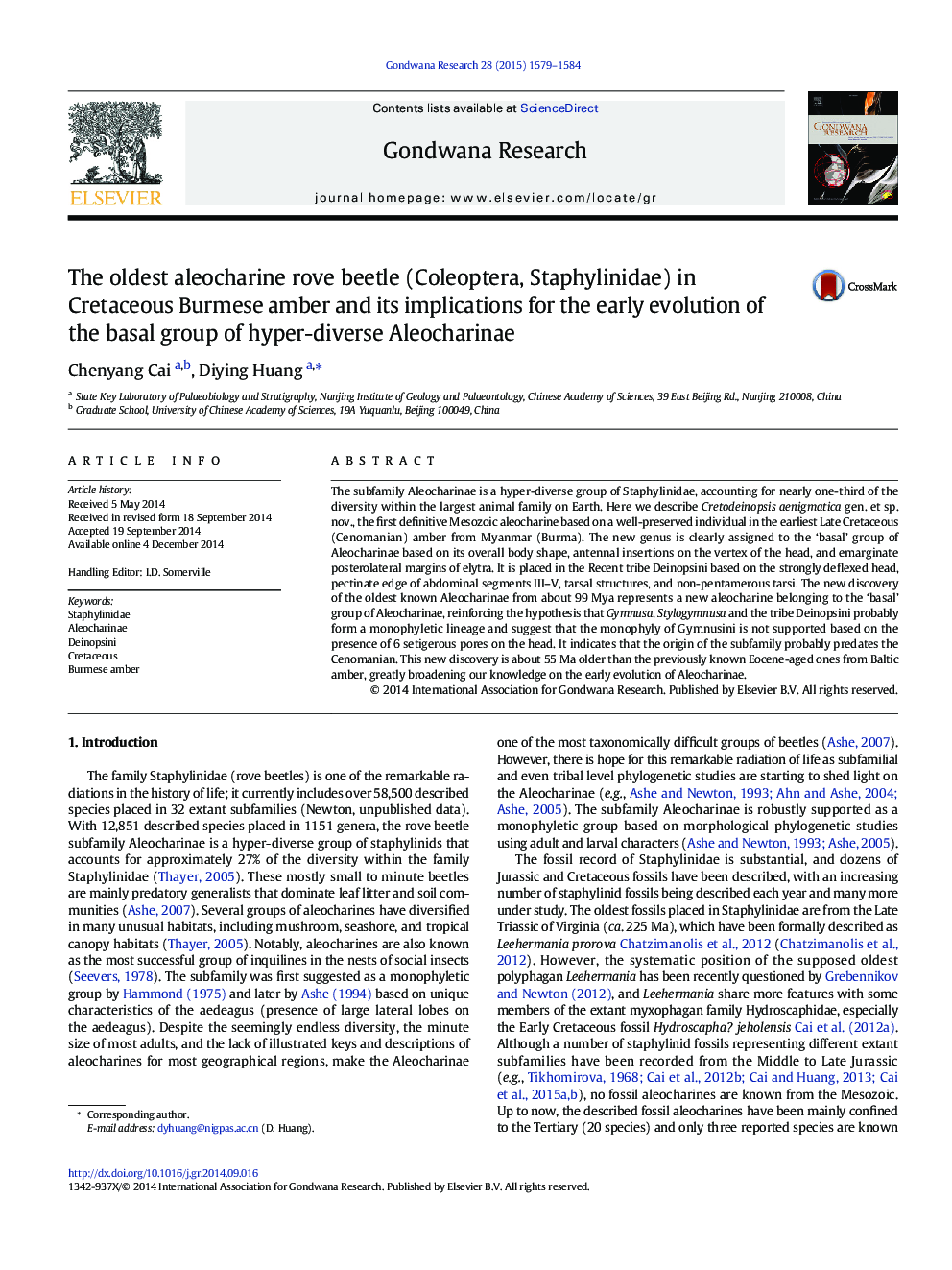| Article ID | Journal | Published Year | Pages | File Type |
|---|---|---|---|---|
| 4726709 | Gondwana Research | 2015 | 6 Pages |
•The oldest aleocharine rove beetle is described from the earliest Cenomanian.•The discovery reinforces the monophyly of Gymnusa, Stylogymnusa and Deinopsini.•It indicates that the origin of Aleocharinae probably predates the Cenomanian.
The subfamily Aleocharinae is a hyper-diverse group of Staphylinidae, accounting for nearly one-third of the diversity within the largest animal family on Earth. Here we describe Cretodeinopsis aenigmatica gen. et sp. nov., the first definitive Mesozoic aleocharine based on a well-preserved individual in the earliest Late Cretaceous (Cenomanian) amber from Myanmar (Burma). The new genus is clearly assigned to the ‘basal’ group of Aleocharinae based on its overall body shape, antennal insertions on the vertex of the head, and emarginate posterolateral margins of elytra. It is placed in the Recent tribe Deinopsini based on the strongly deflexed head, pectinate edge of abdominal segments III–V, tarsal structures, and non-pentamerous tarsi. The new discovery of the oldest known Aleocharinae from about 99 Mya represents a new aleocharine belonging to the ‘basal’ group of Aleocharinae, reinforcing the hypothesis that Gymnusa, Stylogymnusa and the tribe Deinopsini probably form a monophyletic lineage and suggest that the monophyly of Gymnusini is not supported based on the presence of 6 setigerous pores on the head. It indicates that the origin of the subfamily probably predates the Cenomanian. This new discovery is about 55 Ma older than the previously known Eocene-aged ones from Baltic amber, greatly broadening our knowledge on the early evolution of Aleocharinae.
Graphical abstractFigure optionsDownload full-size imageDownload as PowerPoint slide
